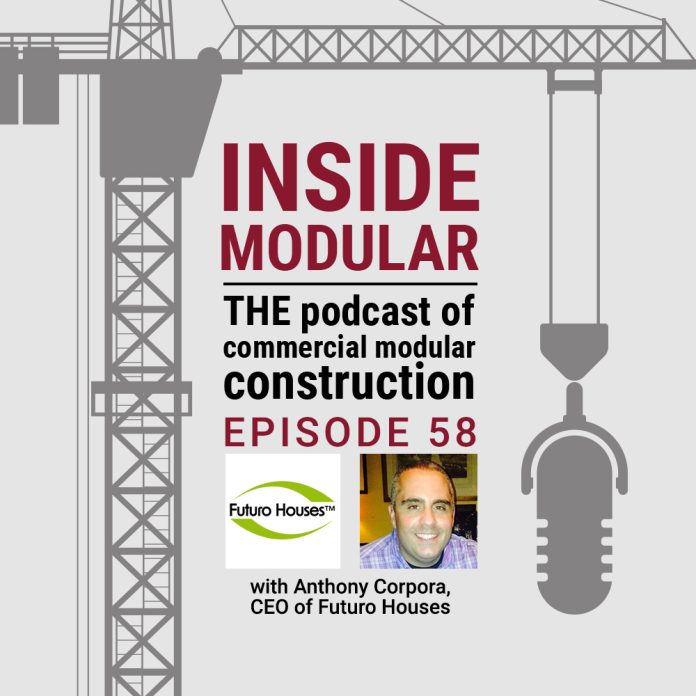Futuro Houses is revolutionising the housing industry with fibreglass housing and trailers. Inspired by the original Futuro, they now have their own ‘UFO house’ on the market
The company is now gearing up for mass production and embracing social responsibility.
They aim to empower individuals, combat homelessness, and create a new era of fibreglass housing.
Can you tell us about Futuro Houses?
Futuro Houses is a subsidiary of US Lighting Group, which is a publicly held OTC Markets company. The company then moved into a new space in the fibreglass world.
We were in the electronics business, and we decided to get into the fibreglass business to create a moulded fibreglass travel trailer company. That’s where I came on board, trying to create something grand.
You need to build a team around you. So, I was put in place to lead the efforts, lead the coordination, and build the ultimate team to pursue the vision of what Cortes Campers will bring and what it’s bringing to the RV industry.
The core competency behind that was fibreglass. We have our engineers, and our technicians are very well-versed in fibreglass. They were also in the boat-building industry. So, as you’re looking at the overall picture of US Lighting Group and getting into diversified markets, we obviously know the RV space is growing.
What we’re bringing to the RV world is amazing. We also felt that we could do the same in the housing industry because, right now, nobody builds fibreglass housing. So obviously, it’s a great way to diversify the company portfolio and dive into another multi-billion-dollar market.
We are taking the same innovation and success of what’s making Cortes Campers successful and putting those same core competencies into Futuro Houses.
We researched the original Futuro from 1968. Then we went further into the house, what was created and the influence that had all over the world. We said this is where we need to start.
We looked at some of the shortcomings of the house; we decided how we could improve it, hence, the creation of our first UFO house, as we call it. We’ve totally re-engineered the house. That’s kind of where we started.
It was kind of a stepping stone to get here. Obviously, the vision of the company is we started with this house because it will definitely grab the attention of the world, which we’ve been successful at, and then we have houses to come.
Can you tell us about your production process and how its evolved since you first started? What processes are you using now that you weren’t when you started?
Right now, we are continuing to make tooling so that we can gear up for mass production.
Basically, you grow and scale fibreglass, not so much by more people; it’s creating more moulds. It’s kind of like a baker and his bread pans. You could make more loaves of bread if you have more pans, and that’s the same with fibreglass housing.
Currently, we have about a 30,000-square-foot building. We make campers as well through Cortes Campers, which is a subsidiary company of Futuro. We are also going to grow and expand Futuro Houses by making more pipe piece moulds, which will be the centrepiece of the houses.
So, once we have multiple multi-reach, then we can very easily grow, scale and make the houses to meet the dealer demand and the consumer demand.
Can you tell us about any other projects that Futuro was working on?
We started with the Futuro UFO house to grasp the attention of the world, and we’ve done that. It’s an expensive and niche product. A lot of people want to use those for that entrepreneurial opportunity to rent them out. Some people still want to live in them, but then we decided to produce in volume.
Price point means everything, so we decided to bring smaller houses to the industry. We have what’s called a 200, 300, or 400. It’s obviously from 200 square feet to 400 square feet, and they’re all unique in nature.
It’s similar to how we build the campers. Everything is fibreglass; it’s all moulded in, we’re using the same appliances, and what we’re putting into our campers. It’s really a seamless transition to go into this market after your tooling and the design are done because the lamination is basically the same.
It’s very easy to just get into having more products, which will obviously excite the consumer base. Then you could do some humanistic things just to keep your karma bank recharged by doing some really nice things for disadvantaged and homeless acts rehabilitation acts out there.
So that’s emerging and looking like they’re these states and cities adopting models of what they’ve done in Texas. Their homeless population is going down, and they’re just looking for a really good product out there. It’s grasping the attention of our dealers and of the decision-makers to get our units out there on the property for these efforts.
To listen to the full episode and to view more content, click here.

















